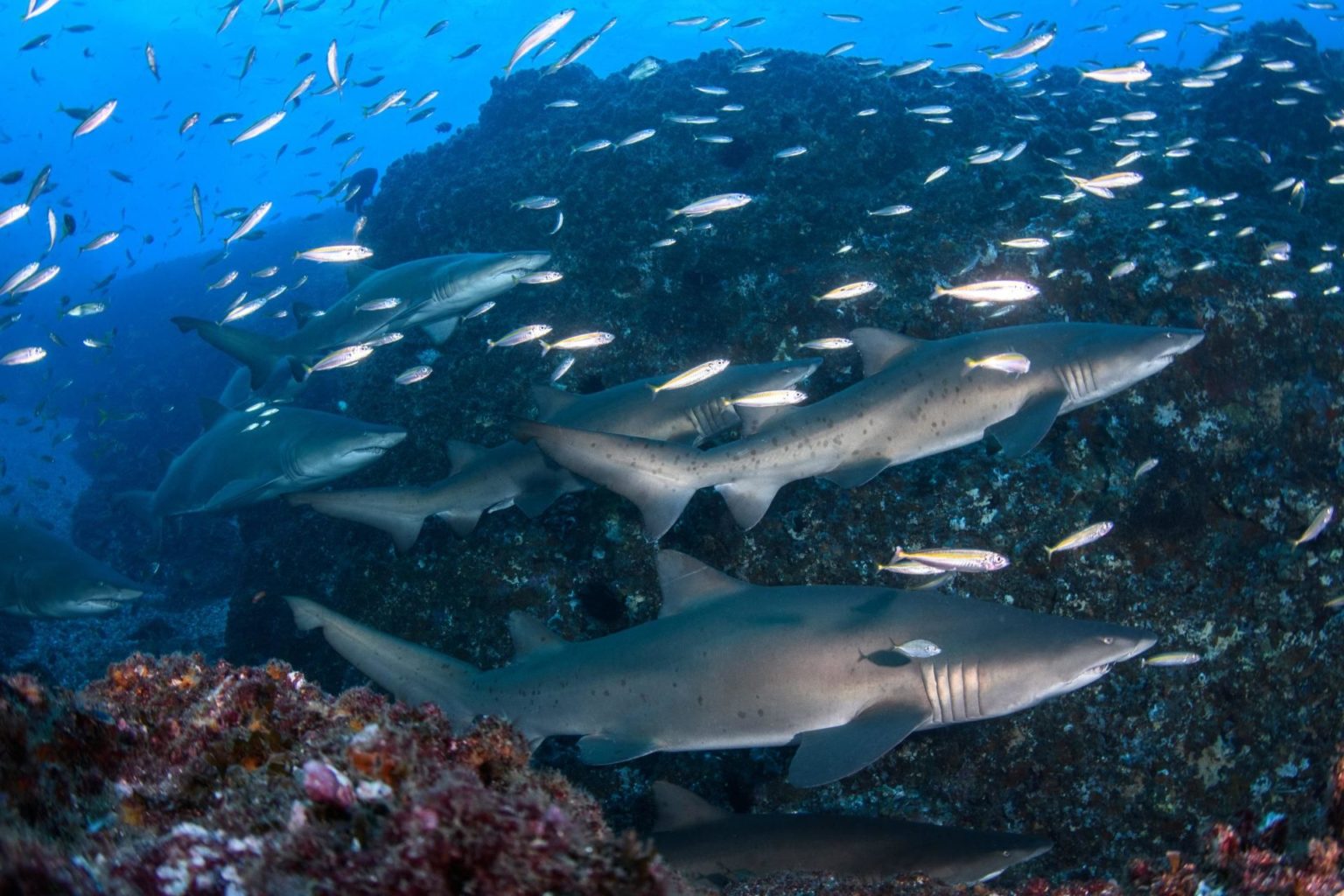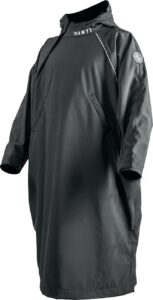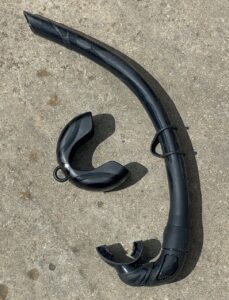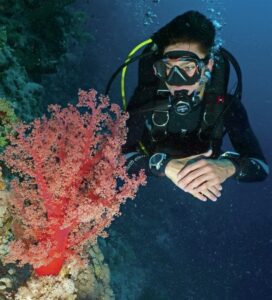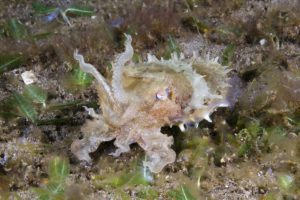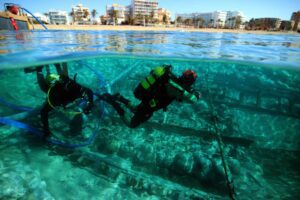Nicolas and Lena Remy offer great photography hints and tips for Modelling with Grey Nurse Sharks
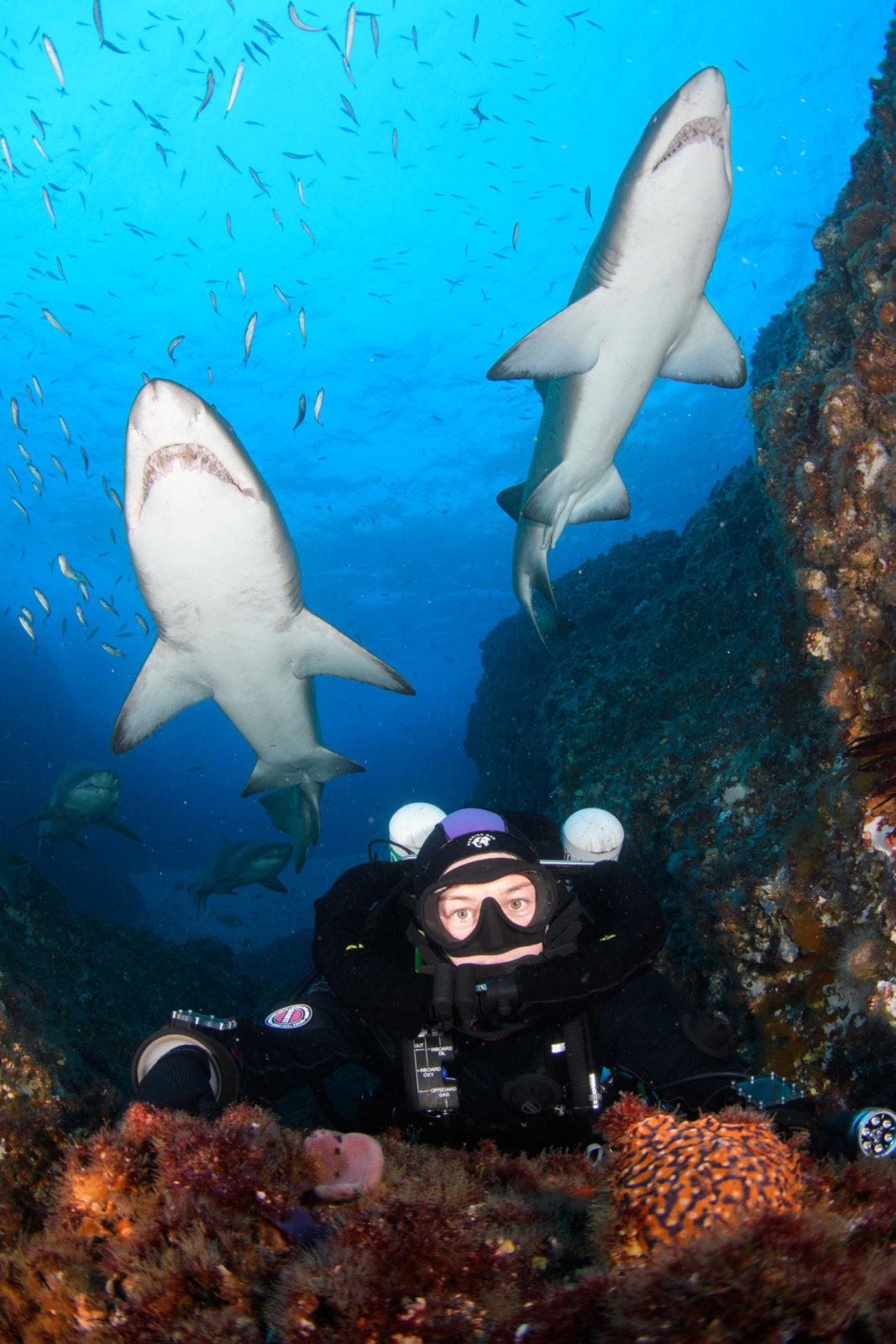
When going on a date, most couples will choose their favourite restaurant, or go to the movies. Being a couple of underwater photographers, our typical date is – more often than not – a good dive site!
When we have something special which to celebrate, such as majestic grey nurse sharks, I ring Peter from Fishrock Dive Centre to book a table spots on his boat, and we head off to South West Rocks. Down there we share our photographic projects, and always receive the support we need, be it being dropped at a specific point or spending longer underwater.
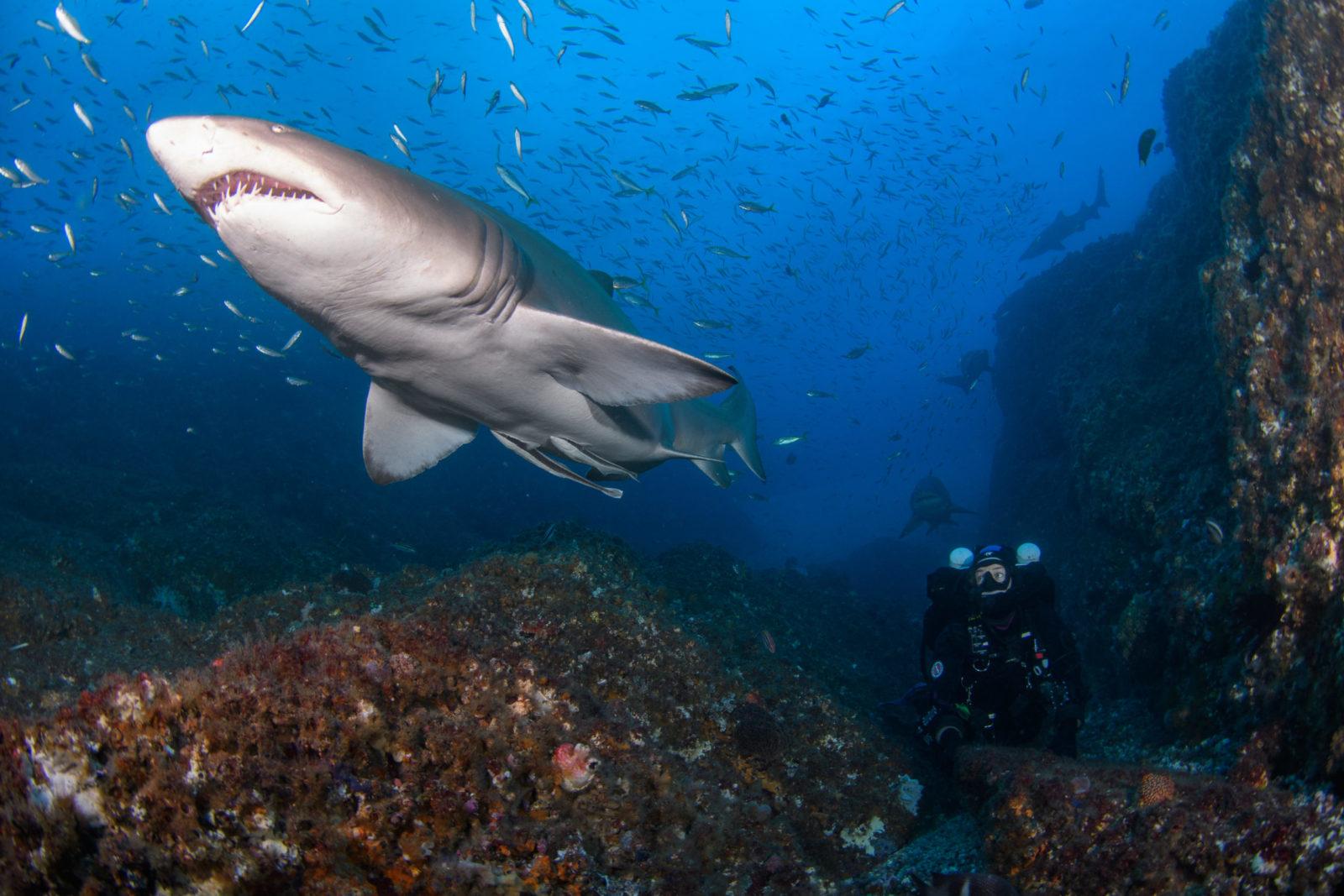
Early July, we were riding towards the famous grey nurse sharks habitat, with the goal to do some shark modelling: Lena would pose among the sharks, and I would capture these encounters with vertical photographs. More specifically, we wanted a shot with both Lena and the shark in the foreground, both facing the camera. Our intent was to do something a little different than the typical grey nurse sharks shot where the modelling diver is in the background. After two days of diving we had succeeded in taking the photograph we wanted, but it was harder than I expected. In the following paragraphs, I will cover the 4 challenges we encountered, and tips on how to deal with them.
First and foremost – and this is the golden rule of underwater photography – you need to get close to the subject. Only this time it applied to both the photographer and the model, making things more interesting! Buoyancy skills were key, as well as avoiding any un-necessary movements that could spook the shark away. Yet, different grey nurse sharks have different tolerance to divers. I have observed those around Fishrock are more relaxed than the individuals I approached in other grey nurse sharks habitats (Wolf Rock, North Solitary Islands, Bass Point). Maybe this has to do with Fishrock’s topology, with cave and canyons where sharks are packed close to each other and visited frequently by divers.
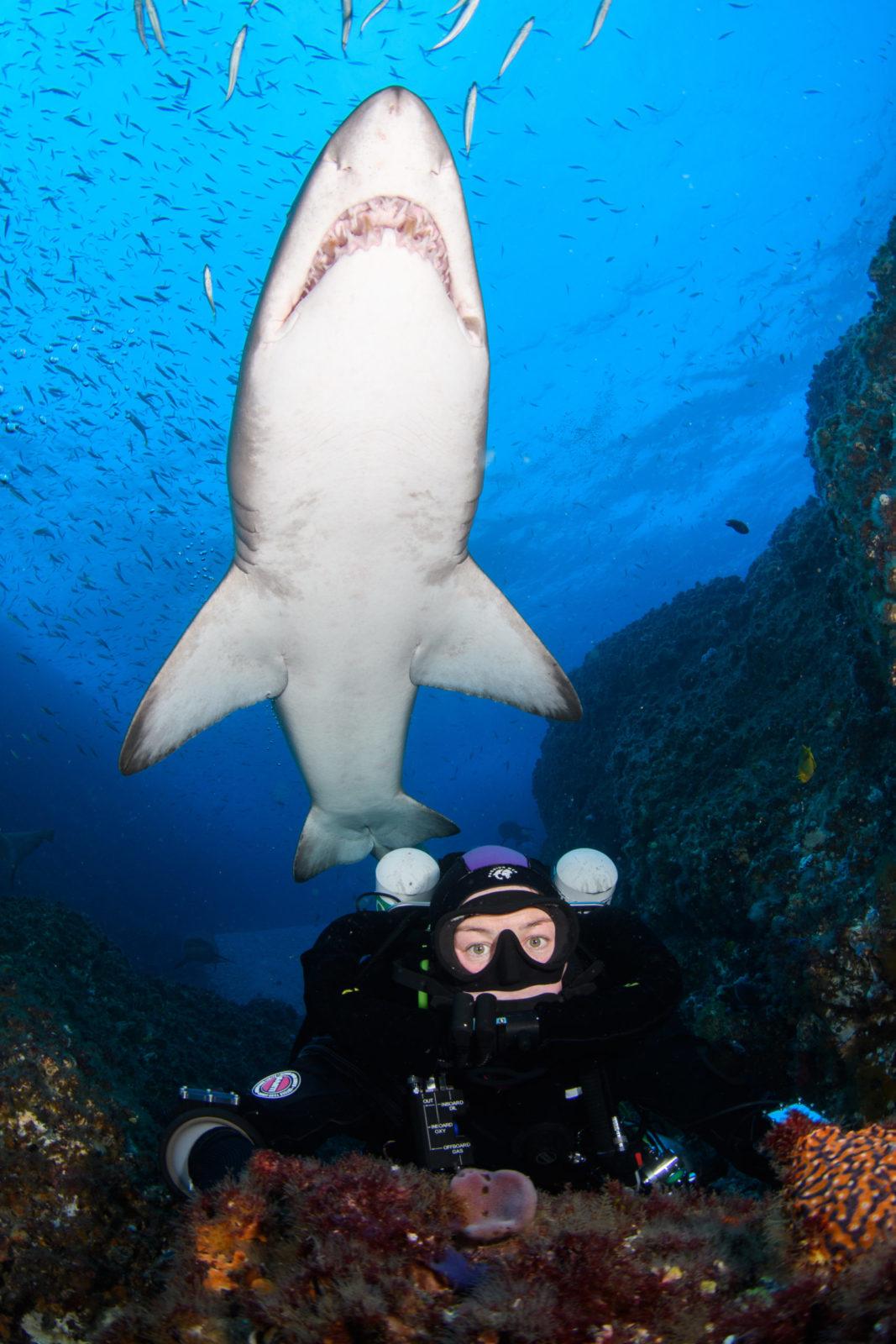
Secondly, you need to get your lighting right, ahead of time. For such a photo the grey nurse shark had to come within 1 meter or so, which wouldn’t have happened if I had been re-positioning strobe arms at the last minute. Meaning you need to frame the shot in your mind before looking for a subject: where will the model be, will the shark be swimming into the frame, or on the side. Think about how close the model and shark will be, to adjust your strobes power and camera settings accordingly. Your last adjustments will be according to the spot where you decide to position yourself.
This brings me to the third point: getting the grey nurse sharks where you want it in the frame! Grabbing a 3 meters long predator is neither advisable nor allowed, so you need to find the best spot to position yourself and your model. To do this, you should search where the grey nurses gather, which will vary day by day, depending on local currents and water temperature.
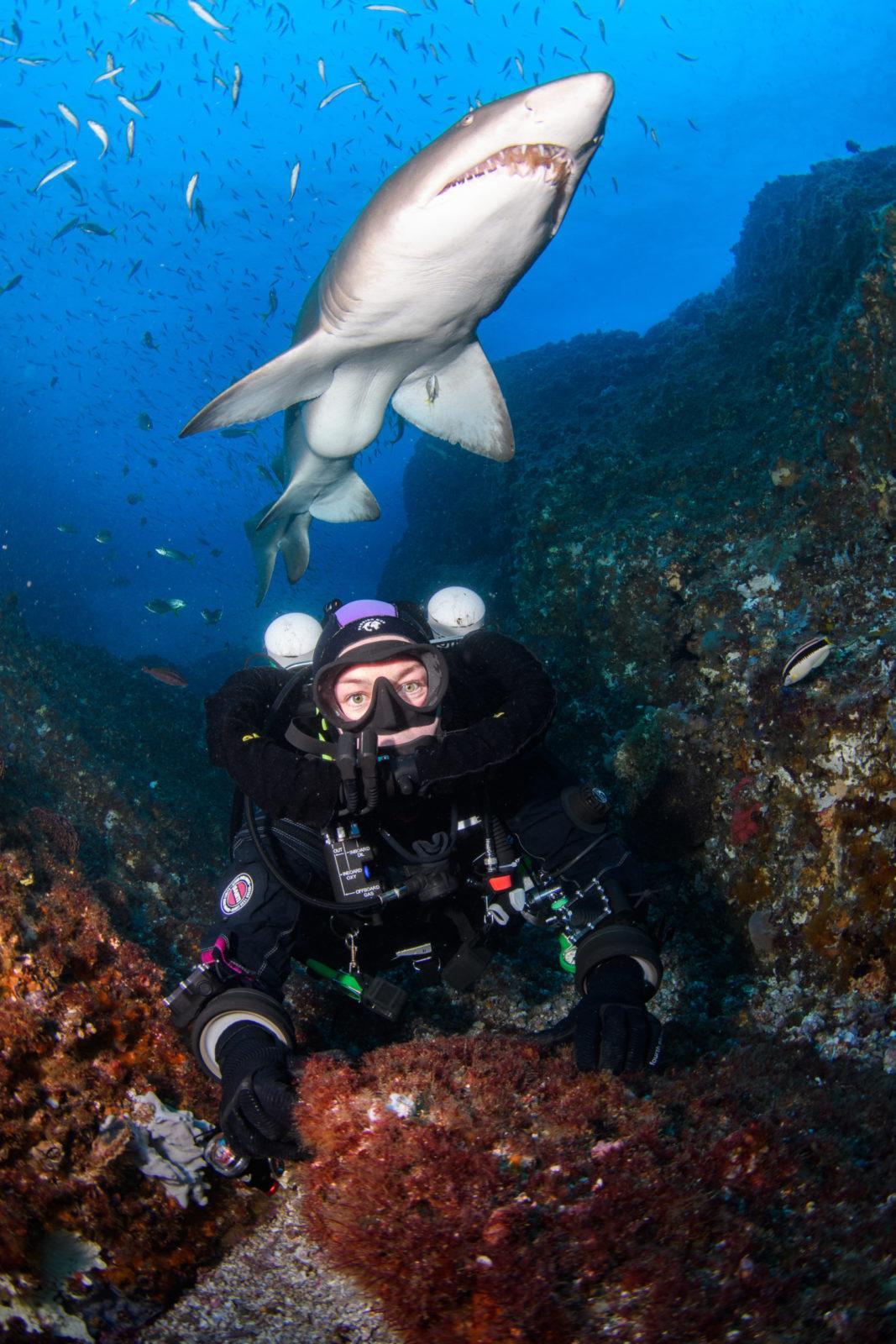
Once found, you will notice grey nurses usually travel in a “loop”, for instance swimming back and forth along the walls of an underwater canyon, which makes their movements predictable. You then must locate a spot along this “loop” where you are able to remain still. Early July the current was raging through the gutter north of the cave’s shallow entrance, which caused many grey nurse sharks to “loop” there. We noticed a small rock tucked in this gutter at 20 meters depth and decided to settle around it. This rock offered some protection against the current, and was positioned so that the grey nurse sharks, once accustomed to our presence, would swim right above our heads.
Last but not least, communication between the photographer and model is key. We normally use a set of dedicated hand signals, but I noticed these gestures bothered the sharks, so we ended-up communicating only with our eyes. We kept looking at each other, blinking to share enjoyment, raising eyebrows so that Lena knew when a grey nurse shark was approaching on her back, and looked into the camera. On the second day, we spent 80 minutes looking at each other’s eyes, and enjoying the continuous passing of 2-3 meters long sharks by our side…
What a great date!
Each month our photography experts Nicolas and Lena Remy will offer hints and advice on a wide range of subjects to help improve your Images.
Article Written By Nicolas Remy
Photo Credit: Nicolas Remy
For more images from Nicolas and Lena visit their Website, Nicolas & Lena Remy Photography or follow them on Instagram and Facebook
Want to Read more about Photography?
